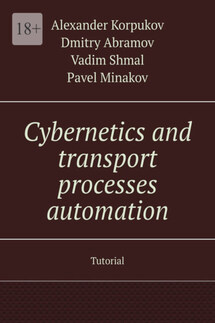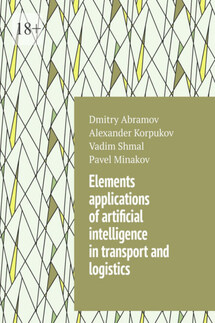Elements applications of artificial intelligence in transport and logistics - страница 7
Many optimization algorithms have been developed that allow genetic algorithms to run efficiently on limited hardware or on a conventional computer, but implementations of genetic algorithms based on these algorithms have been limited due to their high requirements for specialized hardware.
Heterogeneous hardware is capable of delivering genetic algorithms with the speed and flexibility of a conventional computer, while using less energy and computer time. Most implementations of genetic algorithms are based on a genetic architecture approach.
Genetic algorithms can be seen as an example of discrete optimization and computational complexity theory. They provide a short explanation of evolutionary algorithms. Unlike search algorithms, genetic algorithms allow you to control changes in parameters that affect the performance of a solution. For this, the genetic algorithm can study a set of algorithms for finding the optimal solution. When an algorithm converges to an optimal solution, it can choose an algorithm that is faster or more accurate.
In the mathematical language of programmatic analysis, a genetic algorithm is a function that maps states into transitions to the next states. A state can be a single location in a shared space or a collection of states. «Generation» is the number of states and transitions between them that must be performed to achieve the target state. The genetic algorithm uses the transition probability to find the optimal solution, and uses a small number of new mutations each time a generation ends. Thus, most mutations are random (or quasi-random) and therefore can be ignored by the genetic algorithm to test behavior or make decisions. However, if the algorithm can be used to solve the optimization problem, then this fact can be used to implement the mutation step.
Transition probabilities determine the parameters of the algorithm and are critical for determining a stable solution. As a simple example, if there was an unstable solution, but only certain states could be traversed, then the algorithm for finding a solution could run into problems, since the mutation mechanism would contribute to a change in the direction of movement of the algorithm. In other words, the problem of transition from one stable state to another will be solved by changing the current state.
Another example might be that there are two states, «cold» and «hot», and that it takes a certain amount of time to transition between these two states. To transition from one state to another in a certain amount of time, the algorithm can use the mutation function to switch between cold and hot states. Thus, mutations optimize the available space.
Genetic algorithms do not require complex computational resources or detailed network architecture management. For example, a genetic algorithm could be adapted to use a conventional computer if computing resources (memory and processing power) were limited, for example, for simplicity in some scenarios. However, when genetic algorithms are constrained by resource constraints, they can only calculate probabilities, which leads to poor results and unpredictable behavior.
Hybrid genetic algorithms combine a sequential genetic algorithm with a dynamic genetic algorithm in a random or probabilistic manner. Hybrid genetic algorithms improve the efficiency of the two methods by combining their advantages while retaining important aspects of both methods. They do not require a deep understanding of both mechanisms, and in some cases do not even require special knowledge in the field of genetic algorithms. There are many common genetic algorithms that have been implemented for different types of problems. Some notable use cases for these algorithms include extracting geotagged photos from social media, traffic prediction, image recognition in search engines, genetic matching between stem cell donors and recipients, and public service evaluations.







